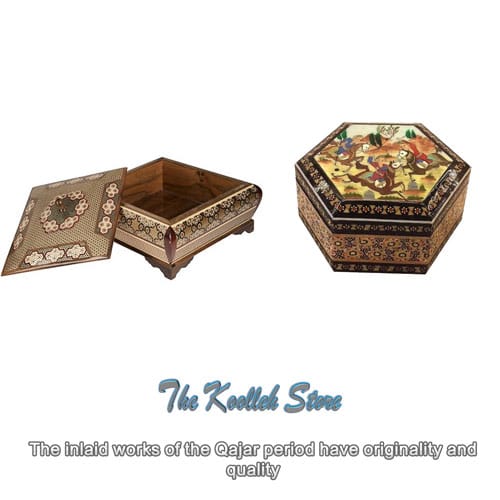The inlaid works of the Qajar period have originality and quality

Samira Arab made this statement at the Khatamkari meeting in the Qajar period from a series of specialized symposiums on research approaches in traditional arts that were broadcast live on Instagram.
He considered inlay work as one of the methods of decorating the surface of objects, especially wooden objects, which has been considered by Iranian artists since the Al-Muzaffar period, and its original features have undergone changes until today.
Arab noted: Perhaps the beginning of the art of inlay work can be traced back to the oldest work in the Metropolitan Museum of the Al-Muzaffar period; This work is a wooden relic that is decorated with inlaid, lattice and inlaid date (761 AH) and the name of the manufacturer as well as the name of the place where the work is made can be seen on its body.
The researcher went on to call the Safavid period one of the most important periods of the art of inlay work in Iran, because the remnants of this period are evidence of this statement.
He pointed out: Safavid kings considered the use of inlays in important decorations and inlaid workers have used inlays to decorate all kinds of surfaces such as entrance doors, graves and all kinds of frames and chairs, etc.
According to this expert, the tomb of Sheikh Safi in Ardabil and the inlay of the tomb of Hazrat Musa Ibn Jafar (AS) in Kazemin are among the outstanding examples of this period.
Arab pointed out that there are countless works of this art inside and outside Iran during the Zandieh period. In introducing the best examples of these works from the marble bed doors related to the historical and cultural complex of Golestan Palace, the inlay of Hazrat Ali Ibn’s tomb fund Abi Talib (AS) mentioned in Najaf and the tomb of Hazrat Sayyid al-Shuhada (AS) in Karbala.
He added: In the Qajar period, Khatam Kari has been associated with the same routine and in many cases with innovations, and from this period, countless relics have been left, such as the works that are preserved in the historical cultural complex of Golestan Museum Palace.
The researcher went on to point out that the innovations proposed in the Qajar period inlay method were far from the issue of forging and creating focus to prevent this dynamic art from stopping: according to the registered standards of inlay work in industrial organizations. Manual, technical and professional and UNESCO can be said that many of the works of Khatamkari of the Qajar period have originality and quality.
He pointed out: in determining the criteria of originality of works of art and history, its national values are considered and innovation in design, color, etc. is one of the most important cases of Khatam work in the Qajar style.
Khatam has suffered serious damage in the contemporary period, especially in the last decade, which may be irreversible over time, he said.
In the end, the expert said: Relying on the works of contemporary artists such as Khatam Hall of the Islamic Consultative Assembly and Khatam Hall of Marble Palace and the support of supporters all over Iran, it is hoped that good things will happen for the future of this original Iranian art.

